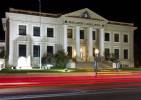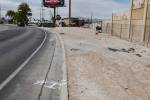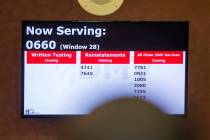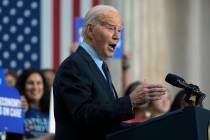Green grants
Nevada, widely acknowledged to be ground zero of the Great Recession, needs both cheap and plentiful electricity and jobs.
Because it penciled out as likely to produce reasonable profits, the private sector was willing to build — without massive government subsidies — cleaner-burning coal-fired power plants in Ely.
However, although coal is cheap and abundant enough to power the country for centuries, reducing our dependence on foreign oil, U.S. Sen. Harry Reid and others in Washington saw to it that no permits were issued for that enterprise, which promised to provide construction jobs, permanent jobs and the plentiful cheap power Nevada’s other entrepreneurs need to keep their doors open and their businesses growing — all within rigorous new EPA air quality standards.
Why? Because Washington thinks it can pick which alternative energy technologies will succeed in the future.
On Wednesday, the Energy Department approved two more loan guarantees worth more than $1 billion for solar energy projects in Nevada and Arizona, two days before the expiration date of a financing program that has already prompted congressional inquiries.
Energy Secretary Steven Chu said the department has completed a $737 million loan guarantee to Tonopah Solar Energy for a 110-megawatt solar tower on federal land near Tonopah and a $337 million guarantee for Mesquite Solar 1 to develop a 150-megawatt solar plant near Phoenix.
The loans were approved under the same program that handed a $528 million loan to Solyndra Inc., the California solar panel maker that went bankrupt and laid off its 1,100 workers after receiving that taxpayer money.
Mr. Chu said the Nevada project would produce enough electricity to power more than 43,000 homes, while the Arizona project would power nearly 31,000 homes. The two projects will create about 900 construction jobs and at least 52 permanent jobs, he said.
Do the math. That’s $20 million per “permanent” job — assuming these projects and jobs prove any more permanent than Solyndra — to provide perhaps 5 percent of the energy needs of a city like Las Vegas.
And solar arrays produce power only 12 hours per day, when the sun shines. The physics of distribution system “loading” — assuming environmentalist lawsuits ever allow the transmission lines to be built — mean each solar farm has to be backed up with a traditional, quick-starting, fossil-fuel generating station to mirror its output through the night.
Sen. Reid is a strong supporter of the Nevada solar project, which he says will help his state’s economy recover. We must all hope so. But was Sen. Reid elected based on his expertise in penciling out profitable power plant investments?
“Candidly, it might be time for the federal government to rethink the whole idea of loan programs,” says Tom Schatz, president of Citizens Against Government Waste, the Washington-based advocacy group. Mr. Schatz called the government’s track record on such loans to date “lousy.”


















